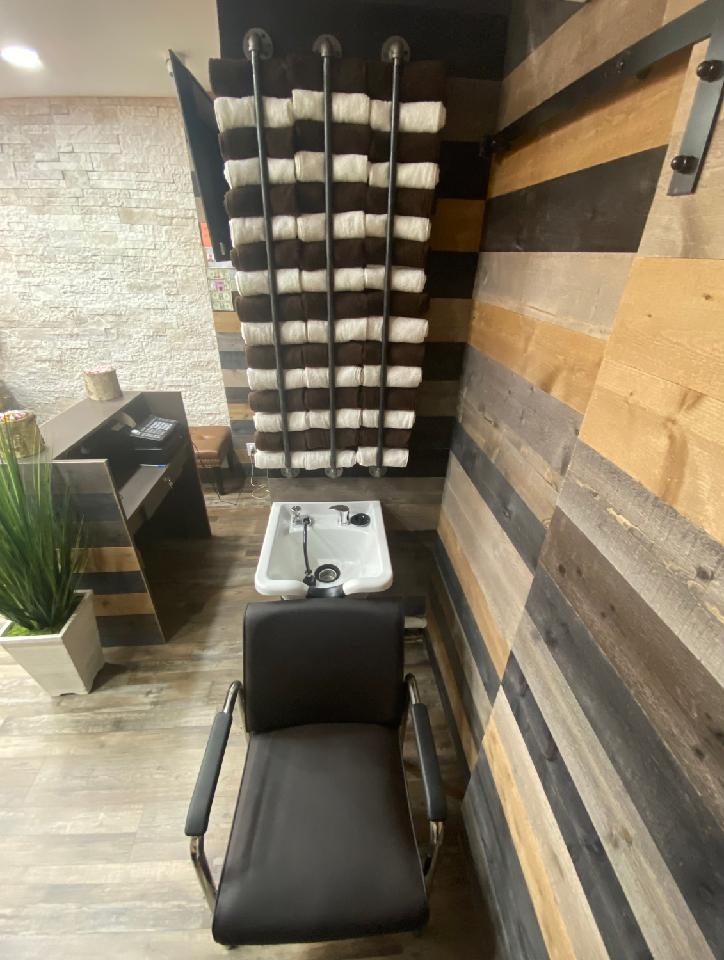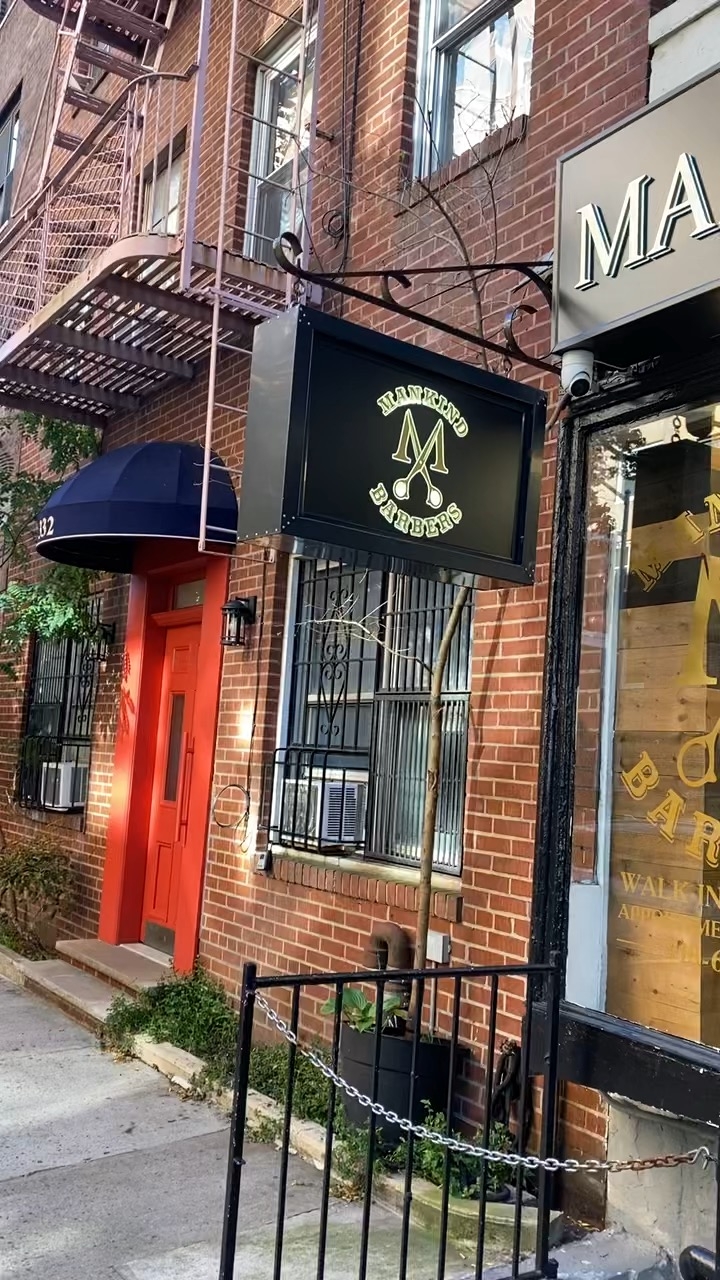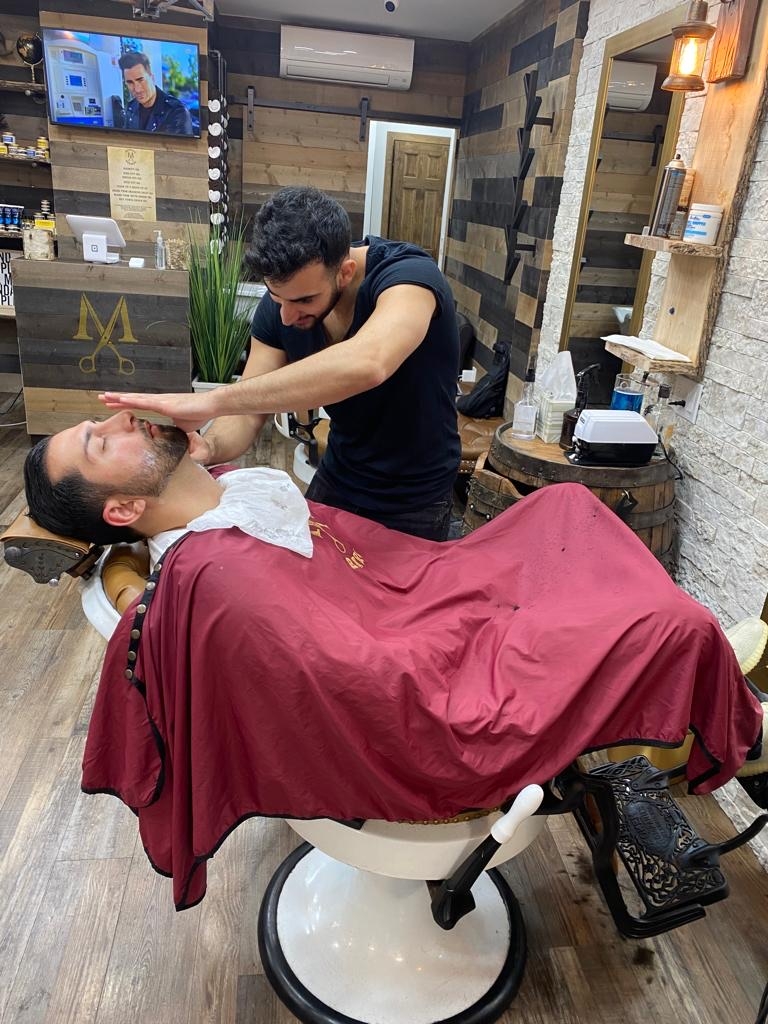

A receding hairline differs from other types of hair loss in that it specifically involves the hairline moving further back on the scalp, creating a more pronounced forehead. This type of hair loss is often associated with male pattern baldness and is typically characterized by a gradual thinning of hair at the temples and crown of the head.
The most common causes of a receding hairline in men are primarily genetic factors, specifically male pattern baldness. This condition is inherited and is more common in men with a family history of baldness. Hormonal changes, such as an increase in dihydrotestosterone (DHT), can also contribute to a receding hairline.
Following a devastating fire, Edinburgh based barbershop Sink and Anchor were forced to completely overhaul their premises. We caught up with the owners to find out one barbershop built back better… When did Sink and Anchor re-open? We re-opened on Tuesday 15 August 2023. The refurbishment took place due to unforeseen circumstances. Can you tell The post How One Barbershop Built Back Better appeared first on Modern Barber.

Posted by on 2024-03-15
We chatted to barber Jon Dryer about some of the most memorable locations he’s cut hair, and where he would like to go next… How did your career start? I had odd jobs growing up, but I knew I needed to get a real career. I knew I didn’t want to do anything that involved The post Cutting in Extreme Locations with Jon Dryer appeared first on Modern Barber.

Posted by on 2024-03-15
Trying to get your work into the press can be a daunting task, especially when you work solo as a freelance barber – which is why we’re sharing these nine tips on how to secure press coverage… Invest Time Sending emails out to magazines, newspapers and sites on a regular, consistent basis increases the likelihood The post Tips for Getting Press Coverage as a Freelance Barber appeared first on Modern Barber.
Posted by on 2024-03-15
Book your tickets for the Modern Barber Awards and join us for a night of barbering inspiration. It’s time to mark your calendars and get your tickets to this year’s awards ceremony at the Telford International Centre on Sunday 23 June – coinciding with our unmissable event, Barber Connect. The evening promises a to be The post Have You Booked Your Tickets For The Modern Barber Awards? appeared first on Modern Barber.
Posted by on 2024-03-13
Stress and anxiety can indeed contribute to a receding hairline. Chronic stress can disrupt the normal hair growth cycle, leading to increased shedding and thinning of hair. Additionally, stress can trigger hormonal imbalances that may exacerbate male pattern baldness and accelerate hair loss around the hairline.

There are some natural remedies and treatments that may help slow down the progression of a receding hairline. These include using essential oils like rosemary or peppermint oil, massaging the scalp to improve blood circulation, and taking supplements like biotin or saw palmetto. However, it's important to consult with a healthcare professional before trying any natural remedies.
Genetics play a significant role in determining the likelihood of a receding hairline. If a man has a family history of male pattern baldness, he is more likely to experience a receding hairline himself. The inheritance of certain genes can make some individuals more susceptible to hormonal changes that lead to hair loss around the temples and crown.

While it may not be possible to completely prevent a receding hairline, there are steps that can be taken to help slow down its progression. Maintaining a healthy lifestyle, managing stress levels, and using hair care products specifically designed for thinning hair can all help to minimize the effects of male pattern baldness. Early intervention with treatments like minoxidil or finasteride may also be effective in preventing further hair loss.
Age plays a significant role in the development of a receding hairline. Male pattern baldness typically begins to manifest in men as they age, with the first signs often appearing in their 20s or 30s. As men get older, the hairline may continue to recede further back on the scalp, leading to more pronounced balding patterns. While age is a natural factor in hair loss, early intervention and proper care can help manage the effects of a receding hairline.

The frequency at which one should replace the blades on their barber shears depends on several factors, including the frequency of use, the type of hair being cut, and the maintenance routine followed. In general, it is recommended to replace the blades every 6-12 months for optimal performance. However, for barbers who use their shears daily or work with thicker, coarser hair types, more frequent blade replacements may be necessary to ensure clean, precise cuts. Regular sharpening and cleaning of the blades can help extend their lifespan, but eventually, the blades will wear down and need to be replaced to maintain the quality of the cut. It is important to monitor the sharpness and condition of the blades regularly to determine when replacement is needed.
Using a shaving mug offers several benefits compared to a shaving bowl. The mug provides a more secure grip for the user, allowing for better control and precision during the shaving process. Additionally, the mug typically has a handle, making it easier to hold and maneuver while lathering up the shaving cream. The narrow opening of the mug helps to contain the lather, preventing it from spilling out and creating a mess. The design of the mug also helps to keep the lather warm for a longer period, providing a more comfortable and luxurious shaving experience. Overall, the shaving mug offers convenience, functionality, and improved performance for those looking to achieve a smooth and clean shave.
Carbon steel barber scissors and stainless steel barber scissors have several key differences. Carbon steel scissors are known for their high hardness, which allows for a sharp and precise cut. However, they are more prone to rust and corrosion compared to stainless steel scissors. On the other hand, stainless steel scissors are resistant to rust and corrosion due to the presence of chromium in the alloy. This makes them more durable and low-maintenance. Additionally, stainless steel scissors are less likely to stain or tarnish over time. While carbon steel scissors may require more frequent sharpening, stainless steel scissors tend to hold their edge for longer periods. Overall, the choice between carbon steel and stainless steel barber scissors depends on the user's preference for sharpness versus durability and maintenance.
When it comes to removing hair clippings, the best type of neck duster to use is a professional barber neck duster. These neck dusters are specifically designed for removing hair clippings from the neck and shoulders after a haircut. They are typically made with soft bristles that are gentle on the skin but effective at sweeping away hair. Some popular options include neck dusters with ergonomic handles for easy grip, anti-static properties to prevent hair from sticking, and washable bristles for easy cleaning. Overall, investing in a high-quality barber neck duster can help ensure a clean and comfortable experience for both the barber and the client.
Using a straight razor for detailing offers several benefits compared to other tools. The sharp blade of a straight razor allows for precise and intricate detailing, making it ideal for creating clean lines and sharp edges. Additionally, the single blade design of a straight razor reduces the risk of accidentally cutting or nicking the surface being worked on. The weight and balance of a straight razor also provide better control and maneuverability, allowing for more accurate and controlled movements. Overall, the use of a straight razor for detailing results in a professional and polished finish that is difficult to achieve with other tools.
Hair thinning shears and regular barber shears are both essential tools in a hairstylist's kit, but they serve different purposes. Hair thinning shears, also known as texturizing shears, have teeth on one or both blades that are designed to remove bulk from the hair without altering the overall length. These shears are ideal for creating texture, blending layers, and reducing the appearance of thick, heavy hair. On the other hand, regular barber shears have two sharp blades that are used for cutting hair with precision. These shears are typically used for creating clean lines, shaping haircuts, and trimming ends. While both types of shears are necessary for a variety of cutting techniques, it is important for hairstylists to understand the differences between them in order to achieve the desired results for their clients.
The advantages of using a shavette razor over a traditional straight razor include increased convenience, ease of maintenance, and reduced risk of injury. Shavette razors typically use replaceable blades, eliminating the need for sharpening and honing, making them more convenient for users with busy schedules. Additionally, shavette razors are easier to clean and sanitize compared to traditional straight razors, reducing the risk of bacterial infections. Furthermore, the disposable blades of shavette razors reduce the likelihood of nicks and cuts, making them a safer option for those new to straight razor shaving. Overall, the shavette razor offers a more practical and user-friendly alternative to the traditional straight razor.